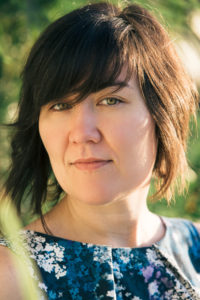Point Park University has revived its film magazine Cinemastilo by converted it to an online project. I recently wrote a blog article focusing on the low representation of female directors in film.
Female Directors in the Film Industry: Fair Treatment?
By Tracy Held Potter
Originally posted September 23, 2014 at Cinemastilo
For any filmmaker, there’s nothing more exciting than watching a group of people coming together to transform his/her script into a set brought to life by thoughtful actors and edited into a cleanly-cut film. However, there is a rising issue of the lack of representation of women in film. Depressing statistics tend to provoke activists with two reactions: “Agh!” and “What can I do about that?”
With all of the accessible film technology available today, it seems like a great time for anyone with the drive to get involved with filmmaking, but if that’s true, why are the statistics of women’s representation in film stagnating or declining? One of the most interesting statistics is the status of female directors, because directors both maintain the overall voice of the film and they have a very significant influence on the team that is assembled to create the film.
According to the 2013 “Celluloid Ceiling Report,” an ongoing study conducted by the Center for the Study of Women in Television and Film at San Diego State University, women represented just 6% of directors working on the top 250 grossing films of 2013 (in contrast, the figure was about 39% of women directing Off-Broadway plays during the same period).
Why should we care whether men or women are directing films? According to World Savvy, gender equity is a human rights issue that, when in balance, can lead to “powerful and meaningful economic and social change.” The idea that women and men have equivalent access to opportunities for employment and for their voices to be heard means that our society benefits from the participation of more perspectives into how we shape our world.
Maybe it feels like a leap to jump from human rights to storytelling, but considering that all of our decisions are influenced by the stories we hear and the ones that created within ourselves, from childhood onward, we realize how important it is to access as much of the human experience as possible—not just those interpreted by men.
Interviews were conducted with several early-career female directors about the representation of women in film directing to get a sense of how their gender has or hasn’t affected their experience in the industry.
Talia Shea Levin (All-Sight), a film director currently studying directing and creative writing at Carnegie Mellon University, says that these statistics are “pretty much all that I think about every day.” She doesn’t accept the low representation of women in film, believing that if she shows up and “does the work” then she should receive the same rewards that male directors get for the same work. Even at this stage of her film career, Levin has experienced disempowering forms of sexism. As a director on set, she has sometimes felt that other members of the team try to “take care of” her in ways that undermine her authority. For instance, when tension was high on a set and she was trying to get a collaborator to take on a task, that individual told her, “Calm down, it’ll all be okay,” instead of taking care of the job that person was asked to do. Levin was convinced that this collaborator wouldn’t have said the same thing to a male director.
After more interviews, it became apparent that overt sexism was less of an issue than the presence of subtle or “institutionalized” bias. …
Read the complete article at Cinemastilo.

Recent Comments